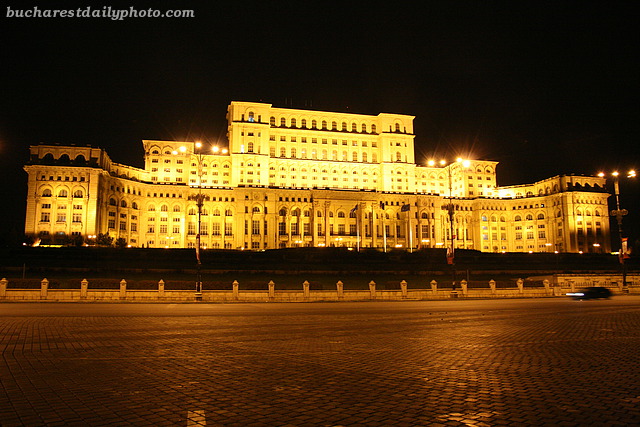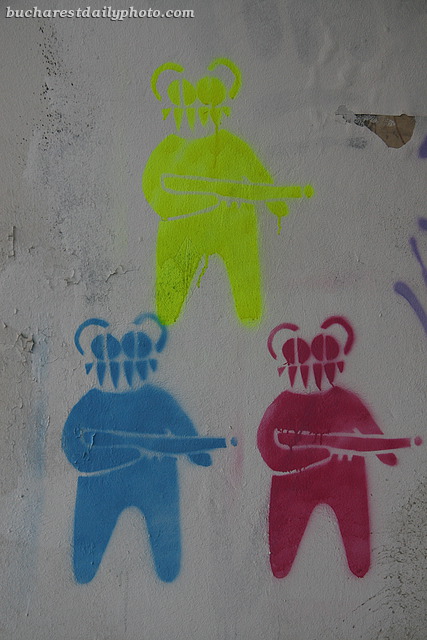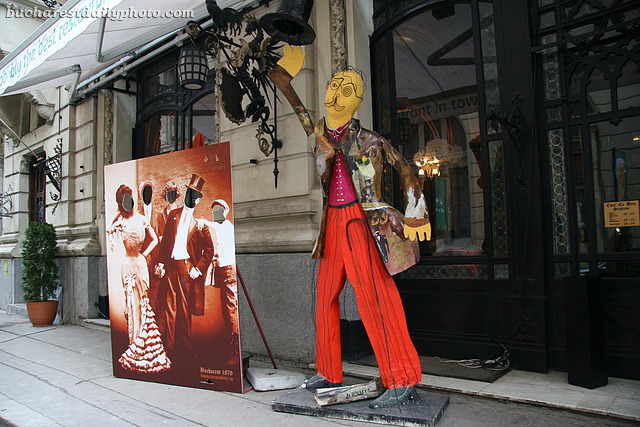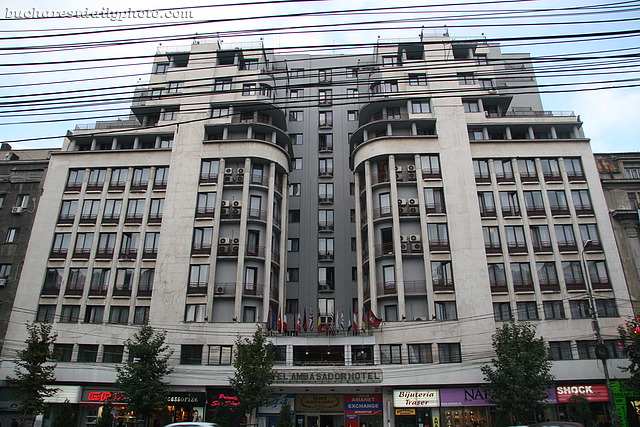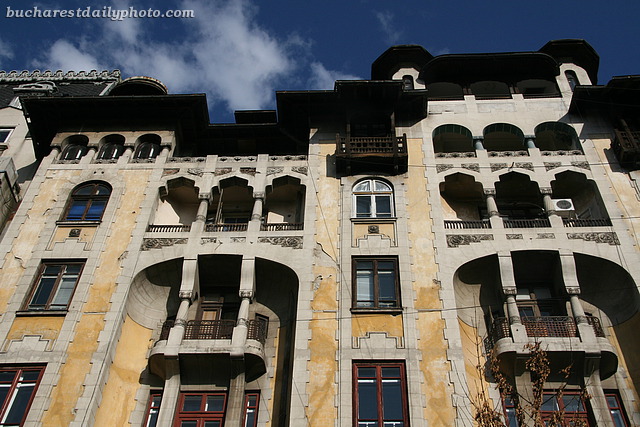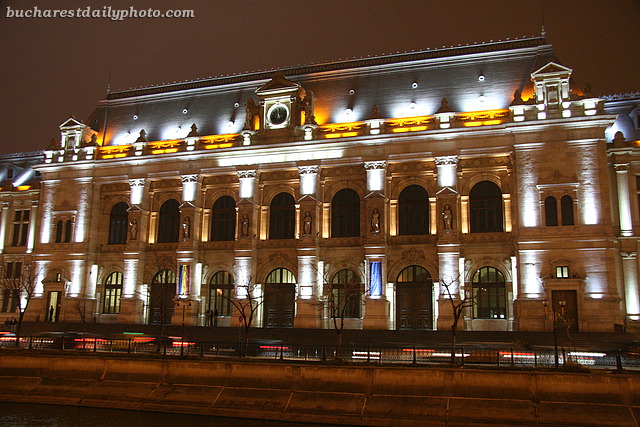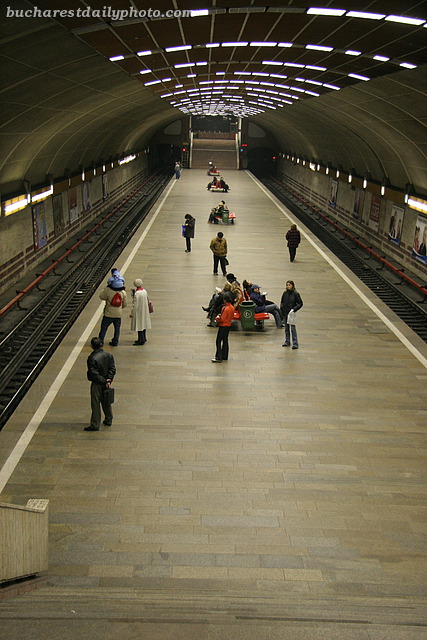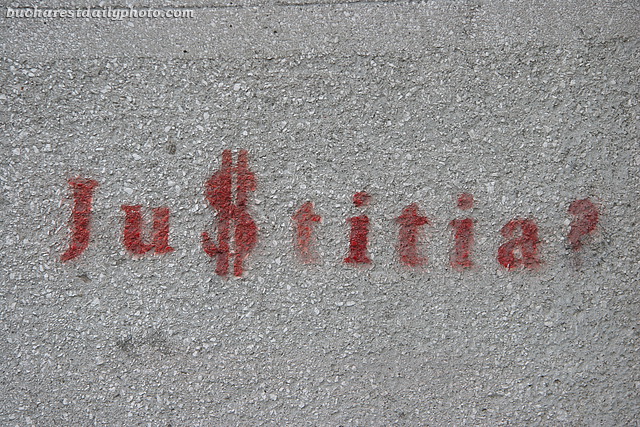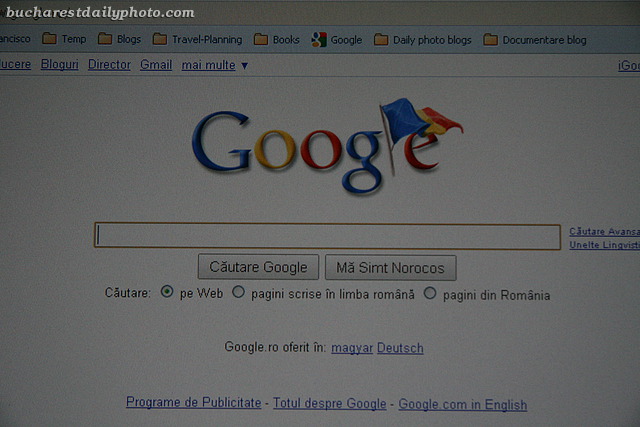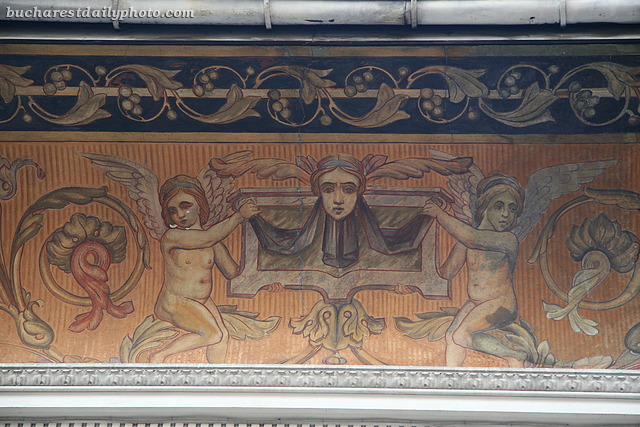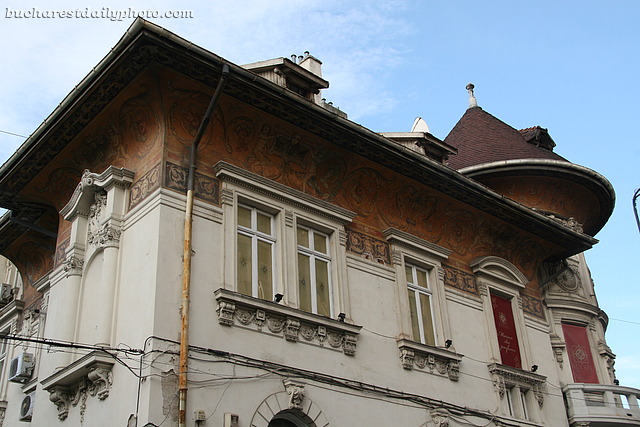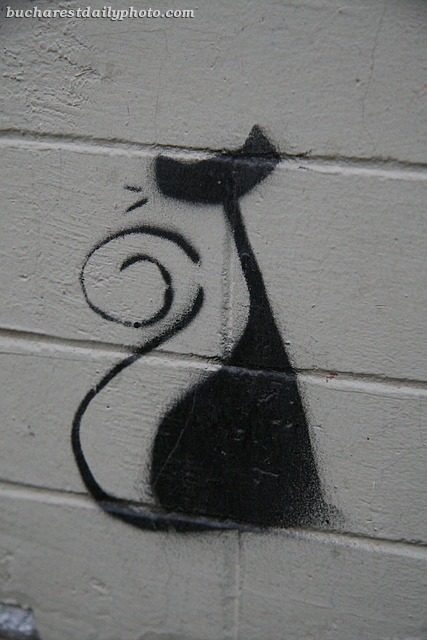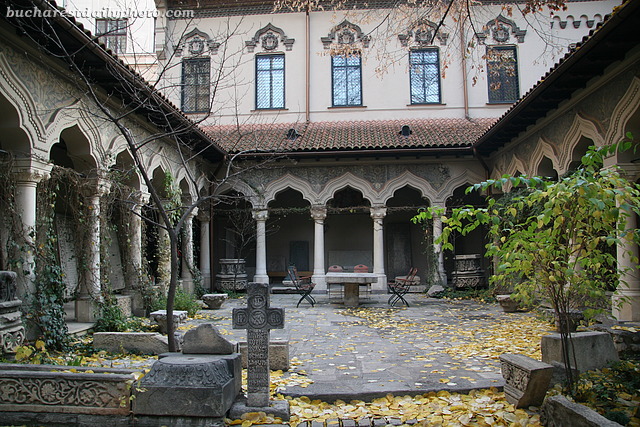I’m still trying to come to peace with this cold giant who became a symbol of Bucharest. To me the Palace of Parliament will always be a glimpse into Romania’s communist past. Here it is for you (again): surreal in size and probably consuming as much electricity as 100 villages.
I guess you know by now that I like graffiti, since I’ve posting many examples of street art on this blog. I don’t like all of it, in general I like it if it’s witty or it has some sort of message, be it cultural, social or political. But in case of today’s example I have no idea what the street artist was trying to express here. I can say that I like its colors and that these look to me like some sort of hostile aliens. What do you think the artist was trying to say?
Who is Mitică? I was surprised to find out that there is wikipedia page dedicated to this fictional character who is supposed to portray the stereotype of the average citizen of Bucharest circa 1900. He appears in a series of stories by the Romanian writer I. L. Caragiale published in 1901. His specialty was delivering sarcastic catchphrases, some of which people still use today. The tall doll that you see in the picture was created by the “I love Bucharest” project; it is part of a set of 10 characters which were the objects of a cultural tresure hunt game that took place last September. The characters were displayed in the city center near Bucharest’s historical sights and they offered clues that would guide your itinerary and lead you to find Mitică. The dolls were created by artists with the help of children and high school students. Mitică can still be seen – I don’t know for how long though – in front of the Caru cu bere Restaurant in the Old Town.
Back in September I’ve talked a bit about Magheru boulevard and its beautiful between the wars architecture. For those who enjoy seeing Modernist and Art Deco architecture this boulevard is a feast; most of the buildings that line it were built in the 20s and 30s. I’ll try showing here a few of the most notable examples. First one comes from Arghir Culina, the architect who designed the building from yesterday’s post. He also designed the building that is the subject of today’s photo, the 12 floors Ambasador Hotel, which was built between the years 1937-1938 and inaugurated in 1939. This hotel has an interesting U-shaped design with the upper floors receded.
And yes, you can also see here the ubiquitous cables 🙂
Let’s move from the French Renaissance palace to a modern office building. Today’s photograph shows part of a beautiful building located on Hristo Botev close to Rosetti Square. It was built as an office building during the years 1925-1928 by architect Arghir Culina. The owner of the building was the architect himself, Culina being also a successful entrepreneur.
The Palace of Justice was built between the years 1890-1895 in French Renaissance style. It was designed by the French architect Albert Ballu and the interiors were finished by Ion Mincu. What you can see in today’s photo is the main facade, with its six pillars and the law themed statues bearing names like “Law”, “Justice”, “Truth” etc. created by the sculptor Karl Stork. Because it was built on fragile ground on the banks of river Dâmboviţa, the building has been again and again damaged by earthquakes and had to be consolidated many times. The last major restoration took place between the years 2003 and 2006. I still wonder how it escaped the Civic Center demolitions during Ceauşescu’s regime.
First of all sorry for the late posting. It took me some time to decide on today’s photo. I will tell you why in a minute. Today is Theme Day at the City Daily Photo community, a monthly event that happens the first day of every month, when all participating blogs will post a picture that relates to the theme day’s description. Today’s theme is Waiting. Click here to view thumbnails for all participants
I have to say that today’s theme posed quite a dilemma for me, the reason for it being the fact that December 1st is also the national holiday of Romania. Which means I was faced with the question: should I post something about the national holiday or should I just go with the “waiting” theme? I also thought of somehow linking the two events but after thinking a lot about it I couldn’t come up with something interesting. December 1st 1918 marks the day of what we call the Great Union, when the provinces of Transylvania, Banat, Bessarabia and Bukovina joined the Romanian Kingdom. The Romanian government is always celebrating this event with a military parade which is not really my cup of tea (and as I’m traveling at the moment I can’t take pictures of the parade even if I wanted too). I already showed the Romanian flag (twice if I’m not mistaken) and posted a picture of the Triumphal Arch which was built to commemorate the creation of Greater Romania and couldn’t think of other national symbols that I could show in this context. I also thought of “waiting” in the context of contemporary Romania and I came up with something along the lines of “waiting for Romania to become a true democracy”, “waiting for corruption to end”, “waiting for my country to find its way to prosperity”, “waiting for the standard of living to grow and for the medical system to become better”. But these thoughts, true as they may be, seemed more like criticizing, and it seemed harsh to criticize with the occasion of a celebration. In the end I couldn’t decide, so for today I’m giving you three photos. The first is a simple “waiting” photo, which I would have posted if today was any other day of the year, showing people waiting for the subway at the Titan subway station. The second one is a graffiti which goes along the lines of “waiting for corruption to end” of contemporary Romania. And finally, the third one is the celebratory one, showing today’s front page at google.ro, marking the national holiday.
Today’s photo shows a close-up of an outside mural that belongs to a beautiful house I spotted on one of my Sunday strolls. According to one source I found on the web (in Romanian), painting murals on the outside of houses was a fashion imported from Italy, present in Bucharest between the years 1905-1915. The house is on Take Ionescu Street, close to Lahovari Square.
After talking about serious subjects for the last few days I thought that it’s time for something lighter: a cute stencil graffiti I found in the Old Town.
Alongside the church there is a small beautiful yard surrounded by a porticoes on three sides. This building has been added during the restoration done in 1899-1901 by architect Ion Mincu and if you look closely you’ll notice that the porticoes are inspired by the architecture of the church. This building shelters a library with a collection of old manuscripts, a refectory where conferences are held, and a collection of 18th century religious objects, some of them brought here from other churches and monasteries that were demolished in the communist years. The convent’s caretakers also work to restore old books, icons, other liturgical objects and clothes, to translate old books and to transcribe old musical scores digitally. The church is also famous for its choir which sings Byzantine music. I really like the courtyard with its old tombstones and fragments of old sculptures. I’ve seen it in many types of weather, on a sunny morning or under grey skies, when it was snowing or when it was raining and it always looks beautiful and has a peaceful and quiet feel.
